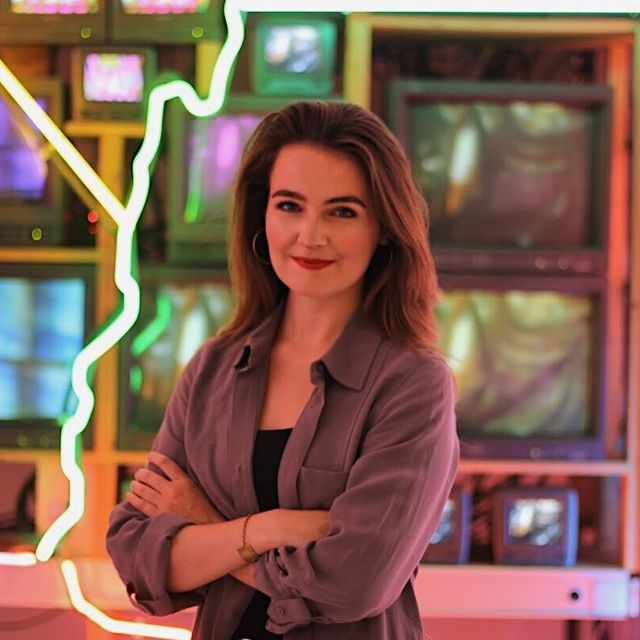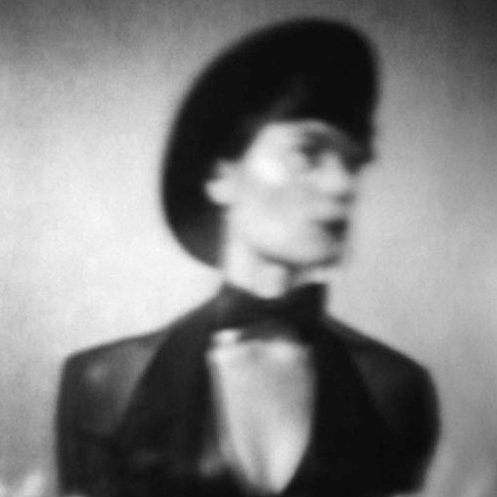
On Friday, March 8th, the Luce Foundation Center hosts another installment of the Luce Unplugged Community Showcase from 6-8 p.m. Presented with Washington City Paper, the free show features performances by local artists Jax Deluca and Knife Wife, with free beer tastings provided by Mustang Sally Brewing Company. Jessica McFadden, the Luce Foundation Center's Program Assistant, reached out to Showcase performer Jax Deluca, to gain some insights into her creative process.
What inspires you to create? Are there any artists/ musicians that have influenced your creative process?
I really enjoy anything that channels energy into a creative project. Brian Eno made a significant and early influence on my sound work, specifically the early Video Paintings 1981 & 1984, his development of the Windows95 startup chime, and everything he says in this documentary, Imaginary Landscapes. Another beautiful, unconventional brain and influence of mine is avant-garde video and sound artist Tony Conrad. You can see his work featured in Tyler Hubby’s documentary Completely in the Present.
These days, there seems to be a growing audience of listeners that appreciate contemporary explorations in experiential noise, drone, and textural sound compositions, which makes it encouraging to keep recording. We’re lucky that smaller labels, like ACR and Surfacing Records, support the rising class of artists experimenting with sound and connect them with new audiences.
How has your style evolved since you first started making music?
I used to play saxophone in the school band, but my favorite thing was making weird sound recordings on cassette tape using a 4-track Tascam and a karaoke machine when no one was home. A few years ago, I came across an old college application which included a cassette tape of one of my early, and much noisier, recordings titled “The Palace of Death.” Though the sound was quite brutal, it included really sincere instructions to listen all the way through at top volume with headphones. I was fascinated with making really dense sound compositions then, so it’s interesting to recognize how that’s remained the same even though the tonal aspects have changed. Recording and performing sound has always had a therapeutic effect for me.
Washington City Paper wrote a review of your newest project, Organs in the Wind, that mentioned the songs were recorded using only “voice, organ, and a few effects pedals.” Can you elaborate on your recording and production process?
My art school education at Alfred University’s Institute for Electronic Integrated Arts consisted of a highly intensive and unusual curriculum spearheaded by electronic artists Peer Bode and Andrew Deutsch. During these classes, we learned a bit about analog synthesizers for video and sound, extended sound-making techniques, and deep listening. On one occasion, using instructions featured in “Software for People” by Pauline Oliveros, we were instructed to sit in a field, write a detailed journal entry of the sounds we heard, and then recreate this experience of sound using voice. For a curriculum deeply entrenched in understanding electronics as an artistic medium, we did a fair amount of work with our voices and the natural environment. That’s where I really became interested in recording electronic meditations that combine natural sound and processed signals.
The process of recording my recent release, Organs in the Wind, started with a few simple organ tones. From here, I would begin matching vocal tones to the organ and running these sounds through a few pedals, such as a Line 6 Delay Modulator and the TC-Helicon VoiceLive Touch. Both of these pedals feature a loop function, so it’s easy to begin transforming a single voice into a multi-tonal orchestration of sound and rhythms. Also, I like to keep the looping function “open” so that it continually records a new loop while the previous loop slowly decays over time. This helps blend the organ tone and voice box as one singing voice that morphs into a slow-changing tonal fabric. From here, I'll spend a lot of time listening and shaping the captured sounds into the final compositions. In a way, producing these recordings are part of a very personal ritual that pays homage to our invisible connector, the electric current.
What’s your experience in the DC music scene been like?
Really positive and supportive. I’m incredibly thankful for places like Rhizome DC, which regularly hosts some of the most engaging sound and video artists touring the world in an intimate performance space. It’s also really amazing that institutions like SAAM and the Luce Foundation Center are able to provide local artists with this opportunity to perform in a beautiful and unique space. So thank you!
Do you have any upcoming projects that you’re working on?
Of course! Actually, this Luce Unplugged performance on March 8 will feature a new sound collaboration with Mattson Ogg, also known as Dura. The project blends portions of the sound meditations from Organs in the Wind with a set of ukulele songs. For a long time, I had been trying to find way to mesh together the two facets of my music interests, slowly unfolding sound compositions and really slow songs drenched in reverb. So this is a step towards achieving that vision. For this performance, we’re also adding an element of light, performed by artist Patrick Cain. He will be processing video in real-time using a digital frame buffer.
Outside of continuing to explore variations of audio-visual collaboration and finding places to play, I’m interested to experiment with more experiential installations that will allow participants to immerse themselves in the work for extended periods of time. For example, a meditative audio-visual experience in a float chamber or uniquely constructed space. *Just throwing that out there in case anyone reading this runs a float chamber operation!
I’ll also probably settle down to record a new album in the coming months.
Check out Jax Deluca on Bandcamp, Soundcloud,and Vimeo. Luce Unplugged is a free, monthly concert series held in the Luce Foundation Center for American Art. The series is organized in partnership with Washington City Paper. Be sure to check out upcoming performances and don't miss our Spring Community Showcase this Friday, March 8th. Jax Deluca to open at 6 p.m. followed by Knife Wife at 7 p.m.



















